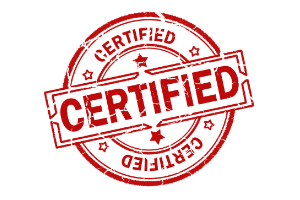
Smaller food businesses often have challenges obtaining prime shelf space in the retail market. Just think how many options there are in the grocery store you visit most frequently. As a smaller business with a great product, how can you get on the shelf by other competing products?
It’s not as simple as convincing the buyer of how great your product is. That’s only a small stepping stone to potentially get conversations going. Once a buyer is interested, they are going to provide you with a long list of requirements that your company will need to meet prior to further consideration.
At the top of that list will be food safety requirements and usually GFSI certification will be listed. After all, retail stores have to ensure the products they’re selling are safe for their customers. In reality, the likelihood of retailers investing time and resources in pulling recalled products off their shelves is minimal (which, in return, you as the business owner will most likely be responsible for covering those costs).
According to myGFSI.com over 150,000 GFSI-recognized program certificates have been issued in 162 countries and GFSI requirements are increasingly being required as a prerequisite to doing business with other manufactures or retail stores.
But how does one become GFSI compliant?
- Select a Program
- Decide which GFSI recognized certification program best meets your product needs. Is it SQF, BRCGS, FSSC 22000, Primus GFS or another approved program? Your future clients may also drive which program you choose. Then obtain a copy of your selected program’s standards.
- Conduct a Gap Assessment
- Review your food safety programs and those required by the standard. Identify all gaps that need to be filled.
- Prepare for Audit
- Review all current programs and build and implement missing programs identified in gap assessment to meet the standard. Utilize outside resources where needed.
- Select a Certification Body for Audit
- Identify a certification body that is certified to audit against your selected program. Contact them to discuss and begin the certification process.
- Maintain Audit Certification
- Ensure programs are maintained and improved upon yearly to meet the requirements. Conduct recertification audit before expiration of certificate.
Obtaining certification can be a lengthy process depending on how many gaps were identified in your initial gap assessment. It takes the entire management team to be onboard to make the process successful, but with successful completion of the certification process, it can open the door to many possibilities.
CIFT offers a complimentary GFSI assessment with no strings attached.

